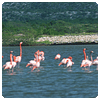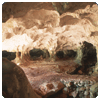
Turks & Caicos All-Inclusive Resorts Click Here

![]()
There is an annual rainfall of 21 inches on Grand Turk and South Caicos, but as you go further west the average rainfall could increase to 40 inches. In an average year the Turks and Caicos has 350 days of sunshine. Hurricane season can vary but usually runs from June to October. |
Turks & Caicos All-Inclusive Resorts Click Here
Nudity is illegal throughout the islands but some hotels do allow it. |
| The US dollar is the official currency of Turks and Caicos. Most
hotels, restaurants and taxi services accept traveler’s cheques, which
can be cashed at local banks. Most credit cards are accepted and banks
offer ATM's as well as cash advances on credit cards. Tipping is normally paid to waiters, taxi drivers, maids and porters at 15%. |
There are no restrictions for travelers on the import of cameras, film or sports equipment except spear guns. To bring in firearms of any type (including spear guns and Hawaiian slings), you must have written approval from the Commissioner of Police. Controlled drugs and pornography are illegal. |
| Electricity follows the U.S. standard: 120/240 Volts/60 Cycles. |
Visitors from U.S.A. and Canada may enter without a passport, if they
have an original birth certificate (or, a notarized copy) and a photo id
(e.g.. Driver's License). Visitors from other countries do require
passports, but no visas are necessary except from countries of the
former Eastern Bloc. They are advised to contact the nearest British
Consulate Office.
|
The total land area of the main islands is 193 square miles. |
| There is a hospital on Grand Turk, and an emergency care facility on Provo. |
| The Islands enjoy direct worldwide telephone access. Available
telecommunications devices include fax machine, telexes, cellular
phones, and Internet connections. Public phones operate by phone cards. Country code is 649. Network is through Cable and Wireless. Pay phones, calling cards, facsimile, Internet, cell phones for rent at various locations. If you have cell service in the USA please bring your phone with you because if you have International Roaming service with a cellular carrier that has a roaming agreement in the Caribbean then your phone will be able to make a receive calls whilst in the Turks and Caicos. If you do not have roaming then you will be able to make calls using the credit card platform. |
| Turks and Caicos is on EST and Daylight Savings Time is observed from April to October. |
In the last decade on Turks and Caicos, divers have begun to discover some of the finest coral reefs and walls in the world. From the legendary walls of Grand Turk, West Caicos and Provo's Northwest Point to the historic wrecks south of Salt Cay, a dozen world-class walls have become Mecca for the serious diver. From late December through April, the entire Atlantic
The salt ponds and inland marshes serve as excellent feeding grounds for resident and migratory birds. Search for Great Blue Herons, Flamingos, osprey and Pelicans alongside Egrets, Terns, Frigates, Boobies and other water birds. As part of the National Parks system more than twelve small cays have been set aside and protected for breeding grounds. On some of the less disturbed and smaller islands such as Little Water Cay or Great Sand Cay, it is the Turks island Iguana that dominates the land.
The National Parks were designed to protect the scenic environment and habitats, to preserve and conserve them for future generations as well as make them available for public recreation. In 1992 the government set aside 33 specific protected areas, a list that include nature reserves, sanctuaries and historical sites totaling more than 325 square miles. 210 square miles of this total amount are sensitive and ecologically essential wetlands ratified under the international Ramsar Bureau. Other protected areas include marine replenishment areas as well as breeding grounds for turtles, seabirds and other creatures. A marine mooring buoy system is just one of the many projects currently underway. |
Grand Turk's main attraction is diving; with many dive operators and schools it can cater from novice snorkels to experienced divers. The major income for the island
Cockburn Town is the administrative capital and the historic and cultural center of the islands. It is strongly reputed to be the landfall island of Columbus during his discovery of the New World in 1492. The town itself is well suited for a walking tour. Duke and Font Streets are lined with historic 18th and 19th century
At the Turks and Caicos National Museum you will find a central exhibit that tells the story of the Molasses Reef Wreck, the oldest European shipwreck discovered in the Western Hemisphere (dated around 1505). It also discloses the rich cultural and natural diversity of the islands. Other historic sites include the Lighthouse, Fire Hill and the Hawks Nest Anchorage. |
 Like Middle and East Caicos, swampland and
tidal flats dominate the southern part of the island. North Caicos boasts the
largest flock of Pink Flamingo in the islands.
Like Middle and East Caicos, swampland and
tidal flats dominate the southern part of the island. North Caicos boasts the
largest flock of Pink Flamingo in the islands.
There are Loyalist plantation ruins, the grandest of which is Wades green. Lucayan artifacts were found in the caves near Sandy Point. Cottage Pond at Sandy Point is a large pool of tropical vegetation. There are flocks of Flamingo at Flamingo Pond and Mud Hole Pond.
|
Near Jacksonville on the north west of the island there are a series of caves that used to be used for mining bat guano, and petroglyphs shows early evidence of settlers on the island.
Once home to a large sisal plantation and cattle industry, East Caicos is now deserted. The ruins of the abandoned town of Jacksonville, railroad tracks and cave artwork are testaments of former life. |
Rain is plentiful on Middle Caicos, which is why the island is so green and ideal for agriculture. Middle Caicos is home to the largest caves in all Turks and Caicos at Conch Bar. There are 2 small but comfortable accommodations available.  Mudjin Harbour, a half-moon lagoon with in the ocean and a picturesque beach that juts out from the land to link up with an offshore Cay is a most dramatic feature. The huge limestone caves feature stalactites, stalagmites, bats, owls and salt lakes that link up with the sea, are considered to be one of the most extensive cave systems in the region. There are also the remains of huge Lucayan Indian settlements. One site excavated near Armstrong Pond in 1978 contains a Lucayan ball court, unknown elsewhere in the Lucayan islands. Artifacts recovered from the caves suggest that they were used either as shelter or sacred places.
|
To the north of the island, near Sapodilla Bay, you will find the most beautiful beaches, as well as a
The two main and oldest settlements on the island are Bight and Blue Hills, and are built around fresh water supplies. Both locations give a real feeling of Caribbean villages. If you wish to do some shopping, Provo can offer a good range of boutiques at Turtle Cove. Down Town you will find the likes of retail shops, business offices and banks. Provo has attracted many hotel and resort developers, you will find most accommodations and recreational facilities here. What to do in Provo… Grace Bay which features the famous 12 mile Grace Bay beach is the location for most of
|
Twelve cars wander her roads, soft beaches border much of her shoreline, and herons feed in the Salinas and others in the marshland to the south. The distinctively Bermudan style homes, all with dusty but neatly swept yards, set a tone, and possess an undeniable style. The White House, owned by descendants of Bermudan salt rakers, is a
Salt Cay also hosts relics of the whaling industry that once existed. The whaling station at Taylor's Hill has long been lying in ruins, visitors to this land in the winter stare in amazement at the gigantic Humpback Whales that pass in February and March. The residents are very friendly and are always ready with a bit of conversation. This is old Turks and Caicos, a direct line to a simpler and slower time. |
Other features of the island include the 18th century Commissioner's House, old salt works, and the Boiling Hole, which fed the saltpans that once made South Caicos the islands' largest producer of salt. Scuba divers delight in the variety of coral and marine life such as loggerhead turtles, spotted rays, octopus and barracudas. |
The ruins of Yankee Town, crested by an osprey's nest, its sisal press, railroad and steam engine are evidence of the small civilization that once existed on West Caicos.
A number of other islands and cays remain in their natural state, without human influence, and serve as protected natural habitats for sea birds, Iguanas, Turtles and other wildlife. |
A 22 mile-wide channel, the Columbus Passage, separates the Turks Islands from the Caicos Islands. This 8,000 foot deep passage serves as major transit lines for migrating Humpback Whales, Spotted Eagle Rays, Manta Rays, Turtles and Dolphins. Excellent visibility (up to 200 feet), pristine reefs, abundant tropical flora and fauna, fish and other marine life, quality diving services and easy conditions make the Turks and Caicos Islands a world class and award-winning diving destination. There is exceptional wall diving starting in shallow turquoise water and dropping off into the deep blue
Under the National Parks Ordinance, vast areas have been set aside as marine park and fisheries reserves, replenishment, and mooring buoys have been established at all dive sites and mooring areas to avoid any possible damage from anchors. As part of the general preservation and protection drive, divers visiting Turks and Caicos are encouraged to observe, respect an enjoy the pristine natural beauty of the marine environment and to leave the reef as healthy as they found it. Dive Tips:
Diving equipment is available for rent, P.A.D.I. certification recognized. Diving instruction is available to visitors who want to learn to Scuba Dive. Most properties offer both diver and non diver packages. Inquire with your travel agent or with the property directly. |
The sponge growth and fish population are spectacular and distinctively different from the other Turks and Caicos sites. You can expect Manta Rays in the summer, Turtles year-round and Whales in the winter. This is a primary corridor for migrating Humpback Whales from December through April. |
To the north of
|
Turks
& Caicos
All-Inclusive Resorts Click Here
![]()
To the south of Salt Cay lie the remains the HMS Endymion, a British warship that went down in the late 1700s. She now lies in less than 30 feet of water, an ancient, unsalvaged wreck site. More than a dozen cannons and several large anchors mark her. |
Turks
& Caicos
All-Inclusive Resorts Click Here
![]()
This is the
This area sees far fewer divers, with a subsequent increase in marine life. Expect an excellent fish population with the occasional larger visitor. Divers based at North Caicos frequently visit the fine sites at the nearby Pine Cay and the other Caicos Islands. |
This is reputed to be the finest diving in the Turks and Caicos. |
Expect the Turks and Caicos trademark of clusters of Purple Tube Sponges and strands of Antler Sponges wrapped in cloaks of brilliant Rope Sponges, along with visits by Sharks, Eagle Rays, Turtles and bigger fish. The wall structure varies from dramatically sloping to breathtakingly vertical. |
Turks & Caicos All-Inclusive Resorts Click Here